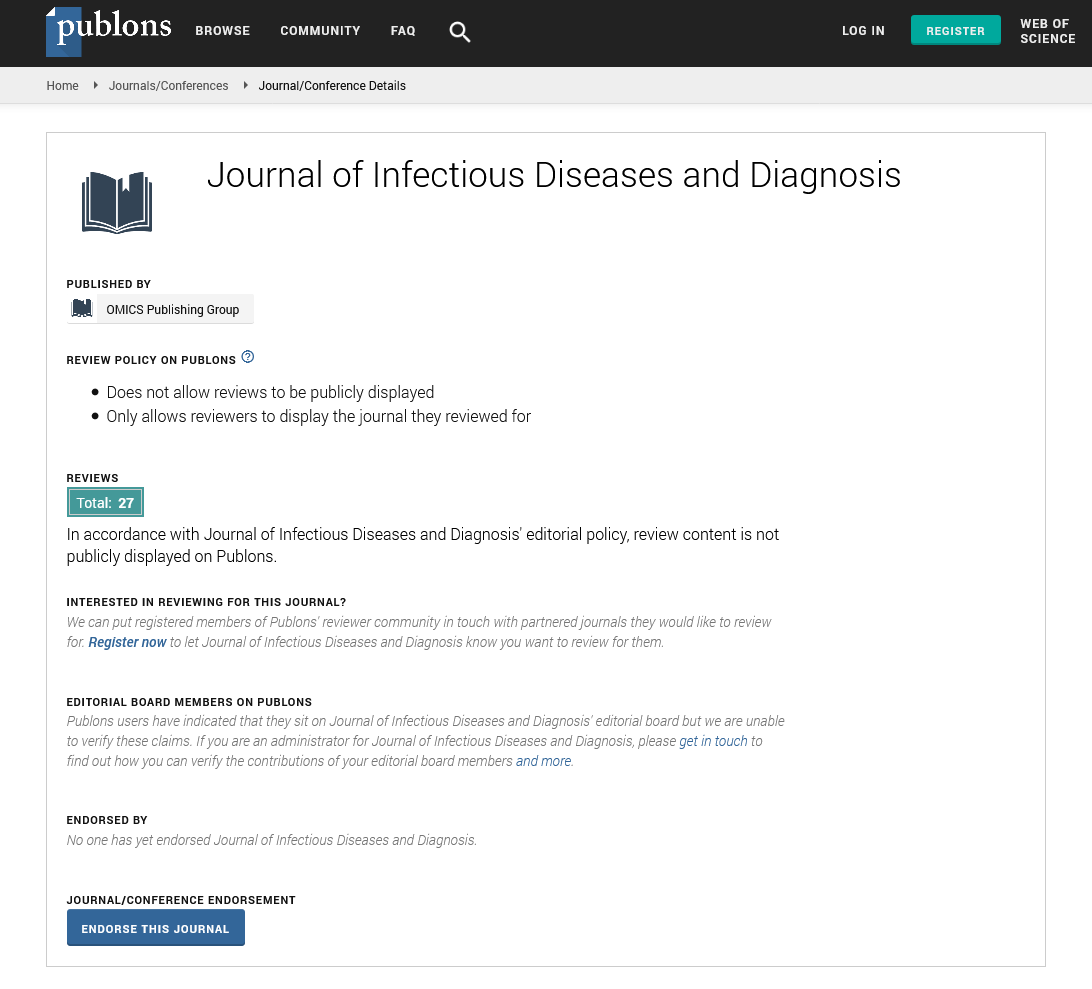Indexed In
- RefSeek
- Hamdard University
- EBSCO A-Z
- Publons
- Euro Pub
- Google Scholar
Useful Links
Share This Page
Journal Flyer

Open Access Journals
- Agri and Aquaculture
- Biochemistry
- Bioinformatics & Systems Biology
- Business & Management
- Chemistry
- Clinical Sciences
- Engineering
- Food & Nutrition
- General Science
- Genetics & Molecular Biology
- Immunology & Microbiology
- Medical Sciences
- Neuroscience & Psychology
- Nursing & Health Care
- Pharmaceutical Sciences
Opinion Article - (2025) Volume 10, Issue 2
Rash Diagnosis: A Comprehensive Clinical Guide for Evaluating and Managing Skin Disorders
Michael Wagner*Received: 25-Feb-2025, Manuscript No. JIDD-25-28672; Editor assigned: 27-Feb-2025, Pre QC No. JIDD-25-28672 (PQ); Reviewed: 14-Mar-2025, QC No. JIDD-25-28672; Revised: 21-Mar-2025, Manuscript No. JIDD-25-28672 (R); Published: 28-Mar-2025, DOI: 10.35248/2576-389X.25.10.326
Description
Skin rashes are among the most common presentations in clinical practice, affecting individuals across all age groups. They may result from a variety of causes, including infections, allergies, autoimmune conditions and environmental exposures. Given the wide range of possible etiologies, correctly identifying the cause of a rash is essential to ensure effective treatment and prevent complications.
Understanding rash types
Rashes can be classified based on their appearance, distribution and associated symptoms. Recognizing patterns is the first step in narrowing down potential causes. Some commonly observed types include:
Maculopapular rashes: Characterized by flat, red areas covered with small bumps. These are often seen in viral infections such as measles or drug reactions.
Vesicular rashes: Involving small blisters, typically filled with clear fluid. Examples include herpes simplex and varicella (chickenpox). Pustular rashes: These resemble vesicular rashes but contain pus. Conditions like acne and folliculitis fall under this category.
Urticarial rashes: Raised, itchy welts that may be triggered by allergic reactions, stress, or systemic conditions.
Scaling or plaque-like rashes: Thickened, scaly skin is commonly seen in psoriasis, eczema and fungal infections.
Associated symptoms: Itching, pain, fever, fatigue, or respiratory issues.
Exposure history: Contact with new detergents, cosmetics, pets, or plants.
Travel and occupation: Some rashes may stem from tropical infections or work-related allergens.
Medication use: Certain drugs are known to cause allergic or immune-mediated skin reactions. Family history: Genetic conditions like eczema and psoriasis may run in families.
Physical examination
Visual inspection remains a central aspect of rash diagnosis. Healthcare professionals observe the:
Color: Redness suggests inflammation or infection, while white or silvery scaling may suggest psoriasis.
Shape and borders: Well-defined borders may indicate fungal infections; irregular ones may point to drug eruptions.
Distribution: Whether the rash is localized or widespread, symmetrical or asymmetrical.
Texture: Raised, flat, or indurated textures can suggest different underlying mechanisms.
Diagnostic tests
When visual examination and history are not conclusive, laboratory and imaging tests may be used:
Skin biopsy: A small sample of skin is removed and examined under a microscope. This can help diagnose inflammatory or autoimmune skin diseases and cancers.
Blood tests: These can detect signs of infection, immune responses, or systemic illness.
Patch testing: Commonly used for allergic contact dermatitis, this involves applying small amounts of allergens to the skin to observe reactions.
KOH preparation: A scraping from the rash is treated with potassium hydroxide to look for fungal elements under a microscope.
Viral or bacterial cultures: Samples from vesicles or pustules may be tested to identify the causative organism.
Common Misdiagnoses
Due to overlapping features, rashes are often misidentified. For example:
• Eczema and fungal infections may look similar in early stages but require opposite treatments.
• Drug rashes can mimic viral exanthems.
• Scabies, a parasitic infestation, may be confused with dermatitis unless burrows or mites are specifically searched.
Pediatric and geriatric considerations
In children, many rashes are caused by viral illnesses such as roseola, hand-foot-and-mouth disease and fifth disease. Pediatric rashes may resolve on their own but still require accurate diagnosis to rule out more serious infections like meningitis. In older adults, rashes may present differently due to changes in skin structure and immune response. Conditions like shingles (herpes zoster) are more frequent and may be mistaken for other skin conditions if not evaluated carefully.
Conclusion
Diagnosing rashes requires a methodical approach involving visual assessment, detailed history-taking and sometimes laboratory support. By recognizing patterns and understanding the broad differential diagnoses, healthcare providers can make informed decisions and ensure timely, effective care for their patients.
Citation: Wagner M (2025). Rash Diagnosis: A Comprehensive Clinical Guide for Evaluating and Managing Skin Disorders. J Infect Dis Diagn. 10:326.
Copyright: © 2025 Wagner M. This is an open-access article distributed under the terms of the Creative Commons Attribution License, which permits unrestricted use, distribution and reproduction in any medium, provided the original author and source are credited.

